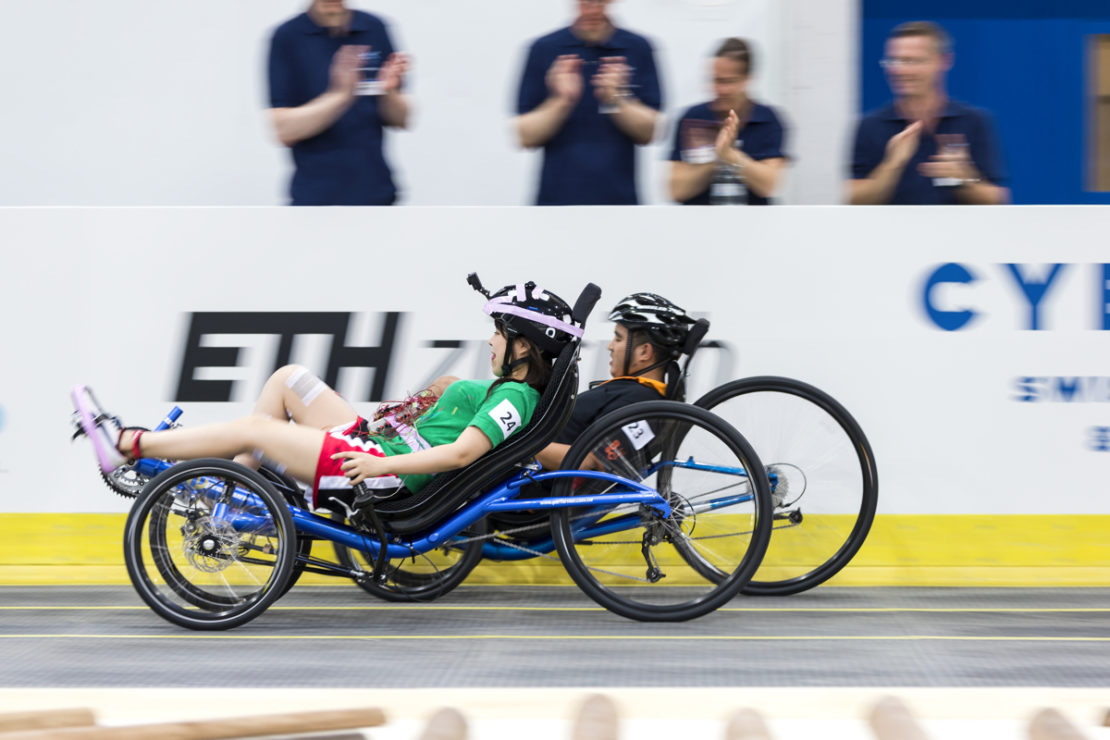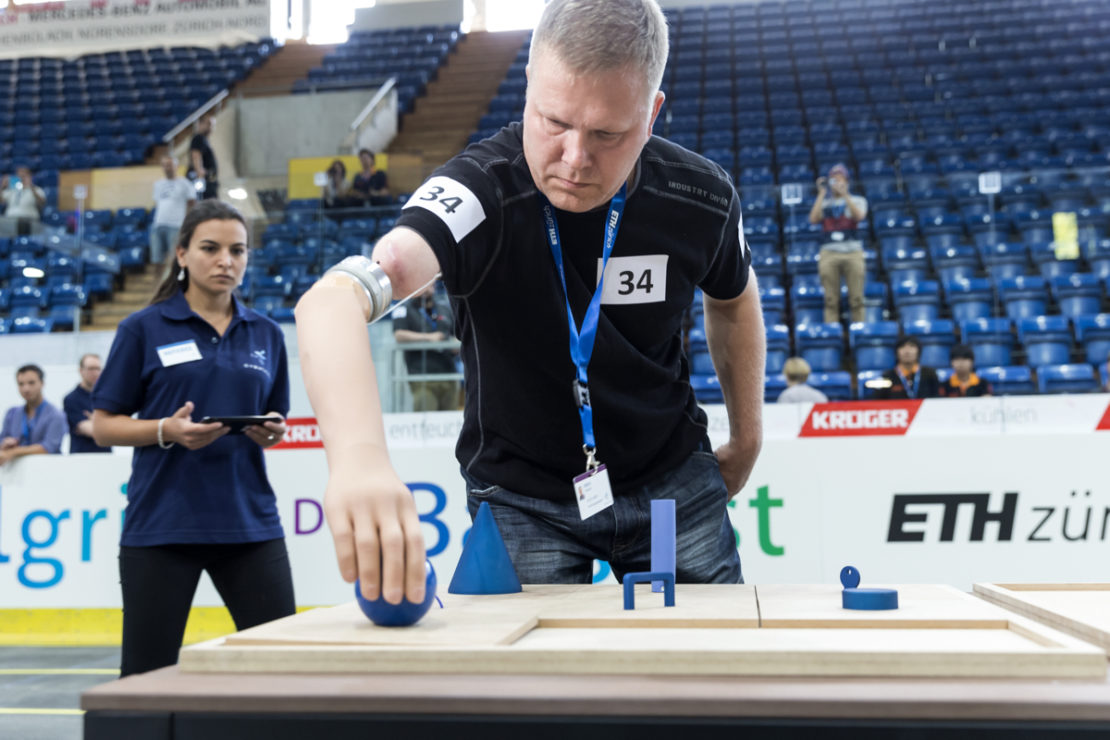How drugs, prosthetics, algorithms and human endeavour will merge in the future of sport

As the Olympics and the Paralympics thunder towards us, we have some tricky dilemmas to consider. As ever, the stakes of sporting success are at their height, and the temptations to enhance performance, beyond the ever-shifting 'rulebooks' of any sport, become enormous.
Some argue for honesty. Sportspersons are already highly calibrated and medically intensified 'cyborgs', who will increasingly be challenged by Paralympians as their tech improves. Sliding over Mount Olympus here is the Greek god Proteus, shape-shifting his frame according to circumstance and intent.
Others say that the physics of the human body will hit its natural limits soon, and that we should accept, poignantly, that the age of world records may well be over. This invokes Achilles, the warrior laid low by the heel that was his only weak point – or for our athletes, the very structural limitations of human physiology.
What is a body capable of? It's the primal question we ask of our sporting spectacles. Those bodies can be as diverse as the very spirit of play and games itself
Let's do some digging into the structure of feeling beneath these headline topics. It's easy to toy with a lurid future in which 'chemhumans' break record after record, in a vein-busting, metabolism-hyping free-for-all. But why do we automatically recoil from this prospect? A brief journey into the scholarship around the idea of 'play' may help explain.
The philosopher David Papineau recently wanted to make a distinction between sports and games. Wittgenstein famously said that no single definition could encompass all that games are, but in 1978 Bernard Suits thankfully came up with a generally agreed one-line definition: "the voluntary attempt to overcome unnecessary obstacles".
A game posits an end-state – putting the ball in a net, checkmate – and then places restrictions on getting there. You can use feet but not hands (or vice versa) to guide the ball; each chess piece has its specified and possible moves across the chequered board.

Yet Papineau wants to say that chess or Go should never be regarded as a sport, while soccer and basketball (and an esportsperson flaying their video game controller, before a roaring audience) should all obviously be. The point is that the latter are also celebrations and displays of physical skill.
A robot arm could move the chess pieces (let's leave recently questions about the nature of the 'intelligence' making these moves to one side). But Roger Federer's topspin crosscourt backhand is valuable for itself, as a thrilling bodily adeptness, and not just as a means to test the tennis rule book.
Both games and sport are competitive, says Papineau, but games often "engender excitement through randomness" (gambling, rolled dice, the randomising AI in a computer game engine); or are a primarily mental and conceptual challenge. Sports are ones of physiological readiness. As the old axiom has it: if you have to put a crisp packet or a pint down to take your turn, you're not doing sports.
Sign up to our newsletter
It seems our anxieties about doping or performance enhancement in major sporting competitions – "an Olympics where we will doubt whether what we are seeing is real," as one headline recently put it – are really anxieties about our deep corporeal connection to the sports before us. Running, throwing, leaping, lifting, grappling with a stick, a ball, even another animal: all of this is within the bodily repertoire of our own daily or lifetime experience.
So sport feels 'real' when we believe that the bodies we are watching are, essentially, like ours – just marked by a noble commitment to developing skills over many years; and 'unreal' when sports science's improvements offer athletes the chance to leapfrog over the physiological grind we so viscerally admire. This faith-in-bodies underpins the authority of the anti-doping agencies and their power to recommend banning entire nations (like Russia) from sporting competitions.
Yet Papineau's distinction between the mental virtuality of games, and the physical actuality of sports, is under attack from some fascinating angles. Digital artist James Bridle wrote recently about how many sporting teams are now using massively powerful computers to show players their 'ghost' performances. This is similar to the way that 'ghost cars' operate in video games – a competitive ideal derived from your previous gameplay, hovering just ahead of you.
Sport feels 'real' when we believe the bodies we are watching are, essentially, like ours; and 'unreal' when sports science offers athletes a leapfrog over the physiological grind
Israeli military technology can also capture so much on-field data that it can simulate a match or round from every angle. The toe of the boot as it strikes the ball, the gymnast's hands on the parallel bars – all reversible and analysable. And even in the midst of team play, predictions could be made available. Sportstech offers the possibility of knowing whether a shot is accurate even as it is fired: conceivably, goalies could be buzzed to not concede corners, by letting balls fly past and out of play instead of tipping them over the bar.
"Who needs team practice," writes Bridle, "when you can have machine-augmented precognition beamed right into your sensorium?"
So there might well be an uneasy alliance between the algorithms that capture and interpret sporting data, and the abstraction of game logic that subject Bridle's 'meat puppets' (formerly athletes) to ever more exacting performance targets.
Popular
Fiction: Divided we stand, by Tim Maughan How Scotland is tackling the democratic deficit The Long + Short has ceased publishingYet there are what we might call 'ableist' assumptions in Bridle's picture of technologised sport: that its "marvellous and shocking endeavours" are best perpetrated by some ideal, da Vinci-like human body, arms and legs stretched out perfectly in their circular span. At this year's FutureFest, we are delighted to showcase competitors from the world's first ever Cybathlon, which will take place in Switzerland in October.
These 'pilots' of varying abilities are working with teams of engineers and scientists, to imagine sports that test brain-computer interfaces, exoskeletal skill, eyeline steering control, and dexterity with neurally connected prosthetics. Data is king for these literally 'bionic' cybathletes, but self-exploited, in order to forge ways of exploring, testing and competing in the physical world that have never been attempted before.
What is a body capable of? It's the primal question we ask of our sporting spectacles. But let's enjoy – in the new spectrum between athletics, para-athletics and now cybathletics – that those bodies can be as diverse, and as generative of surprising action, as the very spirit of play and games itself.